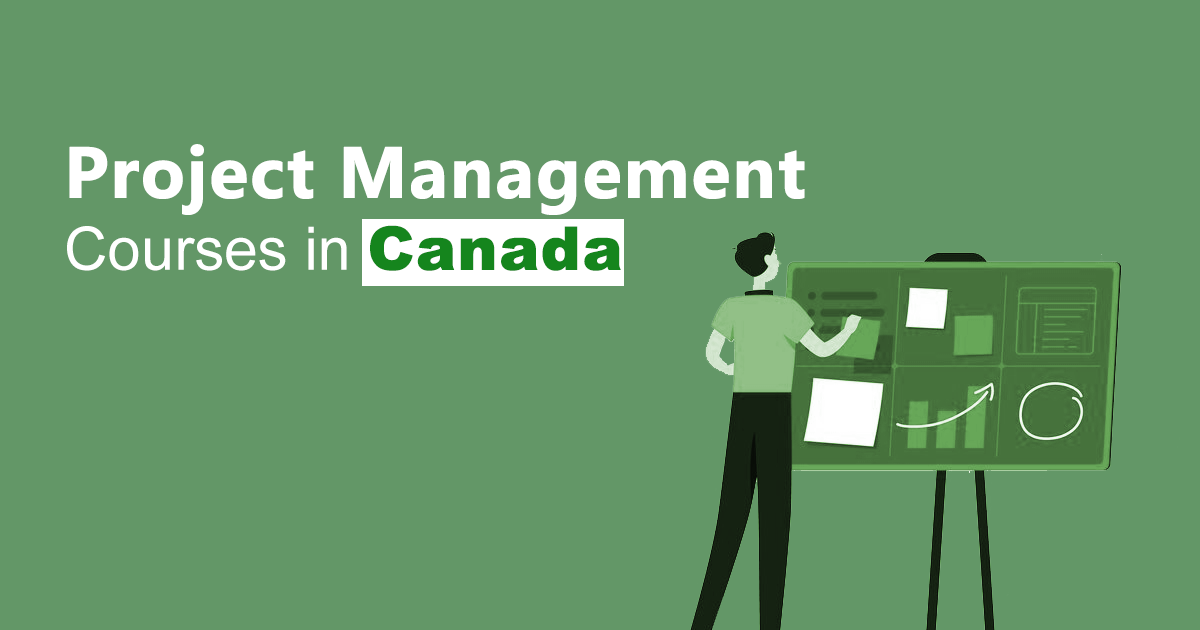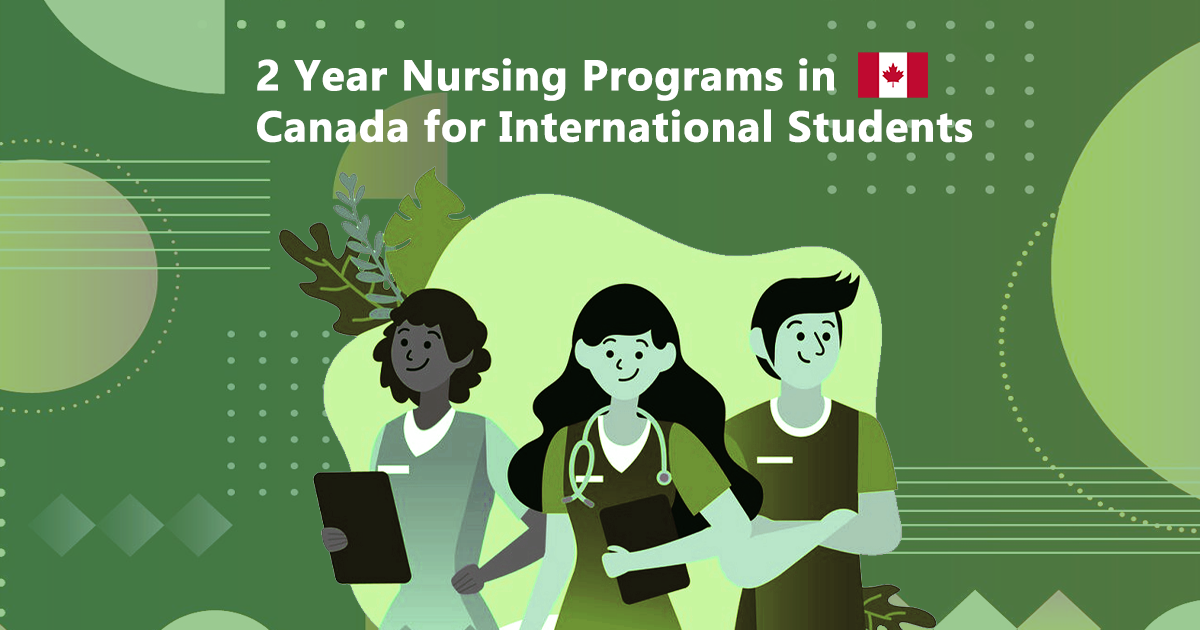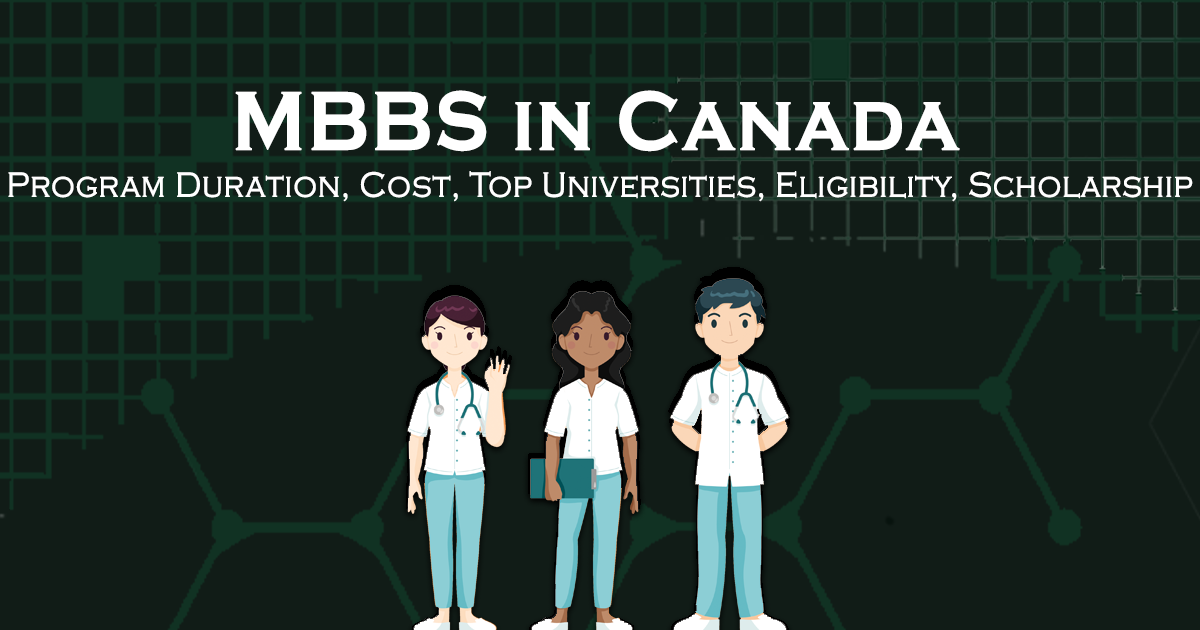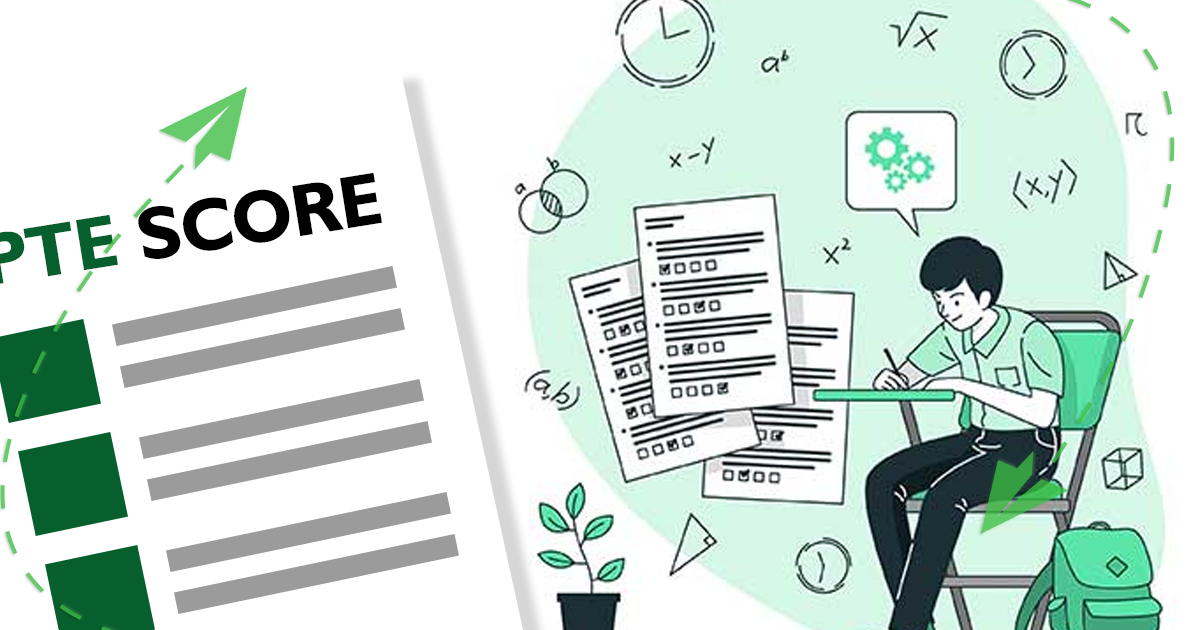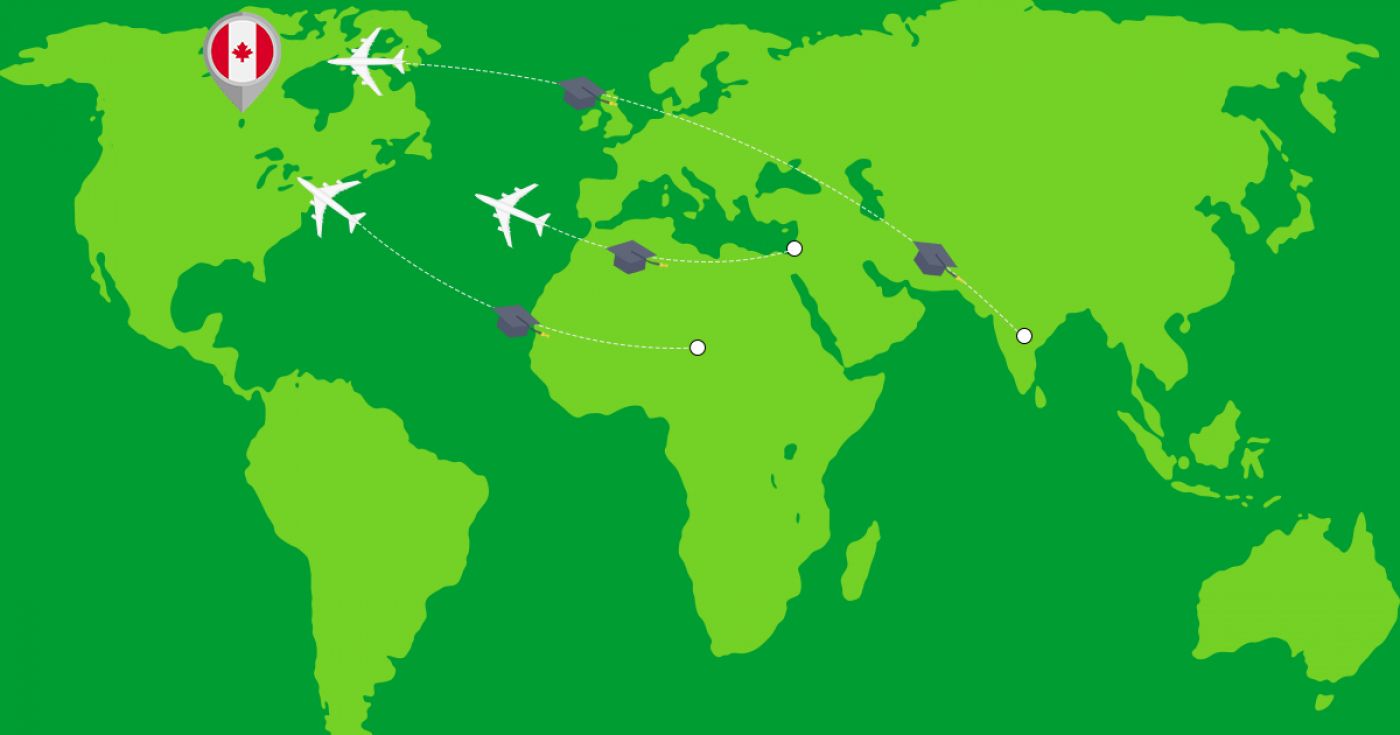Advanced Diploma in Architectural Technology
at George Brown College - Casa Loma Campus Canada
Overview
Design can change the world. Architectural technologists are key members of a project team and play a vital role in turning conceptual design ideas into technical construction documents and practical, buildable solutions. This three-year program provides you with the essential knowledge base and fundamental skills required to work as an architectural technologist within the many companies and sectors of the architectural and construction industry. Performing tasks of a technical nature, you will be part of a team of professionals and tradespeople involved in the building design, construction and management process.
30
Application Processing Days
Under Graduate
Program Level
Fact & Figures
Full Time On Campus
Study Mode
36
Duration
George Brown College - Casa Loma Campus
Location
Advanced Diploma in Architectural Technology Assistant Fee
$15190
Tuition Fee
$12000
Average Cost of Living
$95
Application Fee
Advanced Diploma in Architectural Technology Admissions Requirements
- Minimum Level of Education Required: To be accepted into this program, applicants must have Grade 12 / High School Diploma or equivalent including the following required course(s):
- Grade 12 English (C or U)
- Grade 11 Math (M or U) or Grade 12 (C or U)

Get superfast admissions at top Advanced Diploma in Architectural Technology institutes in 2024
Benefits of choosing
➤Admission’s guaranteed at Top institutes across the world.
➤Enjoy exclusive application fee waiver’s with Edmissions.
➤Unlimited FREE Counselling sessions with Edmission’s
Experts
➤Get Tips from industry veterans to crack the IELTS exam in 1
week.
➤Assistance with scholarships, loans, forex, student accommodation and visa guidance.
Work Permit Canada
Students who wish to work in Canada require a work permit to do so. A student in Canada can work part-time during the course of his studies and full-time during holidays and semester breaks and post the completion of their course/program.
Rules for getting a part-time work visa in Canada
You can also work part-time on campus at your university.
Work Permit
Duration
Your part-time work permit will be valid for as long as you have a valid study permit.
Working Hours
20 Hours/Week
As a full-time student, you can work for a maximum of 20 hours a week. However, you can work full- time during holidays and breaks.
Document Required to Work in Canada
List
To apply for a work permit, you will need a study permit that mentions that you are allowed to work part-time on campus.
Social Insurance Number
Study Permit
You will need a Social Insurance Number (SIN) to Service Canada. if you wish to work in Canada during the course of your studies. To apply for the same, you need a valid study permit, and you should be a full- time student at a recognized university.

You can work part-time off-campus if you are studying in the Quebec province.
Duration of Work Permit Canada
Your part-time work permit will be valid for as long as you have a valid study permit.
Work Hours Canada
As a full-time student, you can work for a maximum of 20 hours a week. However, you can work full- time during holidays and breaks.
Document Required to Work in Canada
To apply for a work permit, you will need a study permit that mentions that you are allowed to work part-time on campus.
Social Insurance Number
You will need a Social Insurance Number (SIN) to Service Canada if you wish to work in Canada during the course of your studies. To apply for the same, you need a valid study permit, and you should be a full- time student at a recognized university.
Working after completing your course
In Canada, you will need a work permit to get a full-time job in Canada after finishing your studies. You chose a work permit like the Post-Graduation Work Permit (PGWP) if you wish to stay back in Canada and work full-time.
Visit Government of Canada Website for more detail
Post-Graduation Work Permit (PGWP)
The Post- Graduation Work Permit (PGWP) allows you to work for three years in Canada if you have completed a two years degree or more.
Application
how can i apply
You can either apply online or download the form and mail the application along with the required documents. Pay your fee and then wait for the decision to come.
Application Documents Required
List
To apply for the work visa, you need a degree from a recognized and accredited Canadian University along with an intention to stay and work in Canada only temporarily.
When to Apply?
One can apply for the full-time work permit in the first three months post the completion of their course during which the study permit is still valid.
How long does it take?
90 days
You will have to wait for 90 days for the decision on your work permit.
Duration
3 Years
The work permit is valid for 3 years if you have completed a two years degree program or more.
Fees
CAD 255
The fee for the work permit is CAD 255 plus the holder fee and the work permit processing fee.
Monthly Wages
CAD 1,600
An applicant is guaranteed a minimum salary of CAD 1,600 per month while working in Canada. This amount though varies on the job and the province you are working in.
Work Hours Canada
No Limit
There is no maximum limit, and you can work for as many hours as you want on the full-time work permit.

Required Documents
List
To apply for the work visa, you will need the following documents:
- Forms: IMM 5710, IMM 5476 and IMM 5475;
- Graduation Proof
- Proof of payment of work permit fees
- Copies of your travel and identification documents, passport pages and current immigration document.
Till a decision is made on your work visa, you can continue to work full time. All you need to have is your completed degree, should have applied for the permit before the expiry of your study permit and you should be allowed to work off-campus.
Information
Disclaimer
The information provided about the work permit is true and complete to the best of our knowledge. All recommendations are made without any guarantee on the part of the author or the publisher. The author and the publisher, therefore, disclaim any liability in connection to and with the use of this information.
Detailed Program and Facts
30
Application Processing Days
Full Time On Campus
Program Intensity
Under Graduate
Program Level
36
Duration
Study Visa
Student Visa For Canada
Any student who wishes to study in Canada requires a student visa. Some of the essential information for the application process is given below.
When Should I Apply?
4 to 6 months
Ideally, one should apply for the study permit at least 4 to 6 months before the commencement of your course/program.
Bank Account
No Need!
There is no need for a blocked bank account to apply for a student visa to Canada.
Duration of visa
Course Duration + 3 Months
The student visa is valid for the entire period of your course plus three months.
Time to Wait for Visa
35 Days
It takes time. It might take up to 35 days post your interview for the application process to complete and for you to finally receive your visa.
Appointment
Required
It varies from applicant to applicant, but one may have to take part in one or two visa appointments, namely a medical examination and a visa interview.
How you can apply
Application Process
An applicant can either apply online or offline by visiting a visa application centre and submitting their documents. After the analysis of your application, you might be called for an interview.
Fee
Visa Fee
The visa application fee for Canada is CAD 150.
Minimum Funds
833 CAD, 917 CAD
You require a minimum monthly amount to be deposited into your account to prove that you can sustain yourself while studying in Canada. If you are studying in Quebec, you need to have a monthly minimum of CAD 917, and if you are studying in a province except for Quebec, you need to have a minimum of CAD 833 per month.
Any other expenses
Required
You will have to pay a medical examination fee and a visa application service fee to the tune of CAD 15 if you visit a visa application centre to apply for your visa.

Medical Examination
Required
One has to undergo a series of medical examinations to be deemed fit for a student visa of Canada. The tests mostly include blood and urine tests, chest x-rays and other organ checkups.
Language Skills
Not Required
one doesn’t need to prove their language skills in applying for a Canadian Visa.
Disclaimer: The information provided about the work permit is true and complete to the best of our knowledge. All recommendations are made without any guarantee on the part of the author or the publisher. The author and the publisher, therefore, disclaim any liability in connection to and with the use of this information.
Other Courses by George Brown College - Casa Loma Campus,Canada
Engineering & Technology
Advanced Diploma in Electromechanical Engineering Technology - Power and Control
Electromechanical Engineering Technology – Power and Control is designed to provide students with both theoretical and practical experience, enabling them to work in a wide variety of electrical engineering areas including power and control systems, utilities, industrial automation and robotics, instrumentation and process control. The curriculum incorporates theory, applications, practical experience and safety practices from power systems, utilities, manufacturing, control system, automation and computer industries, along with concepts from the sciences and humanities to ensure the graduate is equipped with technical knowledge, skills and practice.
36 month
Duration
$ 15190
Tuition
Engineering & Technology
Certificate in Electrical Techniques
The program covers installation, testing, maintenance, analysis and troubleshooting of specified electrical circuits, equipment and systems under the supervision of a qualified person. Throughout the program, students will learn to apply health and safety standards to their work, and perform tasks in accordance with the standards of the Canadian Electrical Code.
Program Learning Outcomes
The graduate has reliably demonstrated the ability to:
- Assist in the interpretation and preparation of electrical drawings including other related documents and graphics.
- Analyze and solve simple technical problems related to basic electrical systems by applying mathematics and science principles.
- Use and maintain test and instrumentation equipment.
- Assemble basic electrical circuits and equipment to fulfill requirements and specifications under the supervision of a qualified person.
- Assist in the installation and troubleshooting of basic electrical machines and associated control systems under the supervision of a qualified person.
- Assist in testing and troubleshooting electrical and electronic circuits, equipment, and systems by using established procedures under the supervision of a qualified person.
- Assist in the troubleshooting of control systems under the supervision of a qualified person.
- Use computer skills and tools to solve basic electrical related problems.
- Assist in conducting quality assurance procedures under the supervision of a qualified person.
- Assist in the preparation and maintenance of records and documentation systems.
- Install and assist in testing telecommunication systems under the supervision of a qualified person.
- Apply health and safety standards and best practices to workplaces.
- Perform tasks in accordance with relevant legislation, policies, procedures, standards, regulations, and ethical principles.
- Apply basic electrical cabling requirements and install and test system grounding for a specified number of applications under the supervision of a qualified person.
- Identify problems and troubleshoot electrical systems under the supervision of a qualified person.
- Assist in the selection of electrical equipment, systems and components to fulfill the requirements and specifications under the supervision of a qualified person.
12 month
Duration
$ 15190
Tuition
Skilled Trades
Certificate of Welding Techniques
Employment opportunities in the Welding trade span several industries including transportation, petro chemical, oil and gas, aerospace, fabrication, manufacturing, pipelines, mining and construction.
George Brown’s Welding Techniques program prepares students with practical, hands-on experience that applies the technical theory and elements of the welding field. Students articulate their technical and essential employability skills through an e-portfolio, based on skill development throughout the program.
At the end of this intense, two-semester program, students will have the opportunity to challenge the shielded metal arc weld test, in accordance with CSA W47.1/W59 standards, in a position(s) of their choosing through the Canadian Welders Bureau. (This test will be voluntary and at an extra cost to the student.)
This experiential program will provide you the skills to master five of the most common types of welding processes:
- Shielded Metal Arc Welding (SMAW): This process uses a consumable electrode covered with flux. It is the primary type of welding used in the maintenance and repair industry. Arc welding is usually used to weld iron and steel, although it can also be used for alloys (aluminum, nickel, etc.).
- Gas Metal Arc Welding (GMAW): This welding process uses electricity to melt and join pieces of metal together. It is generally regarded as one of the easiest types of welding to learn. It is also called Gas Metal Arc Welding (GMAW). It can be used to weld a variety of metals such as carbon steel, stainless steel, aluminum, magnesium, copper, bronze, etc.
- Gas Tungsten Arc Welding (GTAW): The process uses a non-consumable tungsten electrode that delivers the current to the welding arc. The tungsten and weld puddle are protected and cooled with an inert gas, typically argon or helium. It is most commonly used for welding stainless steel and non-ferrous metals like aluminum, magnesium and copper alloys.
- Plasma Arc and Oxyfuel Cutting: This process utilizes an electrode and compressed gas, forced at high speeds through a nozzle, usually copper, to cut metal, primarily mild steel, stainless steel and aluminum. Oxyfuel cutting uses fuel gases combined with oxygen to cut metals, usually steel.
- Fabrication: Metal fabrication is the building of metal structures by cutting, bending, and assembling processes. It is a value added process that involves the construction of machines and structures from various raw materials.
Program Learning Outcomes
- The graduate has reliably demonstrated the ability to:
- Perform work responsibly and in compliance with the Occupational Health and Safety Act and industry processes and procedures, including demonstrating learned knowledge of WHMIS.
- Interpret engineering drawings and blueprints to produce basic graphics and welding projects as required by industry.
- Select, plan, and demonstrate sustainable metal fabrication operations using industrial metal fabrication machinery and emerging technologies.
- Perform basic technical measurements and welding functions accurately, using appropriate equipment and welding techniques.
- Create welds on various types of materials and joints in the major welding positions to industrial standards and codes.
- Use shop tools and equipment to manufacture, assemble, maintain and repair components according to required specifications and industry standards.
- Interact effectively and professionally in shop environments, both independently and with fellow workers and other tradespeople.
- Assess weld quality and implement corrective action where required to follow quality control and quality assurance procedures and meet organizational standards and requirements.
- Create a professional development plan that addresses one’s strengths and areas for growth in the greater context of the welder profession.
12 month
Duration
$ 15190
Tuition
Engineering & Technology
Diploma in Construction Engineering Technician
The Construction Engineering Technician program studies the characteristics of various building types with an appreciation for the latest energy and environmental technologies. The program also focuses on areas that include:
- Interpretation of construction documents
- On-site building engineering and safety
- Quantity surveying (estimating labour, materials, and equipment required for a project)
- Building codes and construction contracts
- Site management practices
Laboratory courses provide practical building layout surveys and quality control testing of various building materials. You will also gain extensive computer experience, working with general business and Building Information Modeling (BIM) software and specialized construction management and estimating software.
Your Field Education Options
- Purpose and Definition of Field Experience
- Field experience combines classroom learning with hands-on work experience structured to meet specific curricular outcomes. This approach to education relies upon a three-way partnership: the student, the institution and industry. Success depends upon the co-operative efforts of each party. It forms the basis for students’ experiential learning which is achieved when the cycle of experience, reflection, and learning is completed. It is a mandatory component of the T161 Construction Engineering Technician program. Field experience positions can be paid or unpaid. Both fulfill the academic requirement as well as strengthen students’ resumes, positioning them more effectively for future employment.
- The field experience requires students to accumulate 100 hours of construction industry-related experience over the course of their third and fourth semesters. The field experience is facilitated through the Angelo DelZotto (ADZ) School of Construction Management, via collaborative efforts from the academic supervisors, program coordinators, and the chair.
Program Learning Outcomes
- The graduate has reliably demonstrated the ability to:
- Develop and use strategies to enhance professional growth and ongoing learning in the construction engineering field.
- Comply with workplace health and safety practices and procedures in accordance with current legislation and regulations.
- Complete duties in compliance with contractual obligations, applicable laws, standards, bylaws, codes and ethical practices in the construction engineering field.
- Carry out sustainability practices in accordance with contract documents, industry standards, and environmental legislative requirements.
- Collaborate with and facilitate communication among project stakeholders to support construction projects.
- Collect, process and interpret technical data to produce written and graphical project-related documents.
- Contribute to the collecting, interpreting and applying of survey/geomatics and layout information to implement construction projects.
- Identify and use industry-specific electronic and digital technologies to support the design and construction of projects.
- Contribute to the resolution of technical problems related to the design and implementation of construction projects by applying engineering concepts, basic technical mathematics, and building science.
- Assist in the scheduling and monitoring of the progression of construction projects by applying principles of construction project management.
- Assist in the preparation of accurate estimates of time, cost, quality and quantity, tenders and bids.
- Perform quality control testing and monitoring of equipment, materials, and methods involved in the implementation and completion of construction projects.
- Apply teamwork, leadership and interpersonal skills when working individually or within multidisciplinary teams to complete work on construction projects
24 month
Duration
$ 15190
Tuition
Creative Arts & Design
Certificate in Gemmology
The Gemmology program teaches you to analyze and classify a wide variety of gem materials, both natural and artificially created. The program focuses on analyzing chemical and physical characteristics of gem and gem-like materials, and identifying different gems. The gem materials are classified into categories according to their desirable characteristics, which eventually determine the value of the gems. To accomplish the identification and classification, you use a number of specially designed instruments, such as microscopes, spectroscopes, refractometers and polariscopes, on real gem materials.
Visual acuity and accurate colour rendition are essential traits for success in Gemmology.
Refractive Index liquid (RI liquid), which contains diiodomethane, is a commonly used chemical in Gemmology practice. If you are pregnant, have certain medical conditions or are sensitive to RI liquid, please consult with your physician for advice before you attend this program, as you will be exposed to RI liquid in Gemmology lab work.
Program Learning Outcomes
- The graduate has reliably demonstrated the ability to:
- Identify a large number of gemstones and gem materials and distinguish them from synthetics and imitations.
- Use, maintain and handle gemmological instruments and testing equipment competently and safely.
- Grade gemstones for quality based on their cut, colour and other physical characteristics, chemical composition and possible place of origin.
- Grade diamonds based on their cut, clarity, colour and carat weight.
- Apply the basic skills of jewellery appraisal to assess market value.
- Contextualize jewellery according to historical and stylistic qualities to assess provenance, materials and method of production.
- Conduct ethical and secure business practices consistent with jewellery business standards.
12 month
Duration
$ 15190
Tuition
Rising fuel costs, indoor air quality and climate change are all contributing factors in raising awareness of the true cost of energy. There is a great need for energy-efficient building environmental system design, construction and maintenance.
In the Heating, Refrigeration and Air Conditioning Technician program students will:
- Develop the ability to size, install and maintain building environmental systems for the residential and light commercial sector.
- Gain solid skills and knowledge in design, operation and maintenance of environmental systems, in heating, ventilation, air conditioning and refrigeration (HVAC/R).
- Develop practical skills through hands-on experience, working on a wide range of furnaces, air conditioners, refrigeration equipment and other appliances in our labs.
- Gain competency with industry-ready skills in soldering, wiring and electric control circuitry and troubleshooting for HVAC and gas installations.
- Use computer-aided design software to assess building heating and cooling requirements, select appropriate equipment and develop HVAC system drawings and specifications for the residential market.
- The program follows industry-standard design practices for environmentally responsible and energy-efficient residential, commercial and industrial systems, as established by the Heating, Refrigeration and Air Conditioning Institute (HRAI), the American Society of Heating, Refrigeration and Air Conditioning Engineers (ASHRAE) and the Canada Green Building Council.
Note: When you enrol in the program in January, you are required to complete semester 2 in the summer (May to August) of the same year in order to continue into semester 3 in the fall.
Program Learning Outcomes:
- The graduate has reliably demonstrated the ability to:
- Relate effectively to heating, refrigeration, and air conditioning supervisors, coworkers, and customers.
- Work safely and in accordance with all applicable acts, regulations, legislation, and codes to ensure personal and public safety.
- Select and use a variety of heating, refrigeration, and air conditioning tools and equipment safely and properly.
- Solve math and applied science problems required to effectively install and maintain heating, refrigeration, and air conditioning systems, and associated components.
- Prepare and interpret electrical, mechanical, and piping drawings.
- Install, service, and troubleshoot heating, refrigeration, air conditioning systems, and associated components.
- Develop strategies for ongoing personal and professional development, that will lead to enhanced work performance and career opportunities, and keep pace with industry changes.
24 month
Duration
$ 15190
Tuition
Creative Arts & Design
Diploma in Dance Performance
This rigorous and comprehensive two-year Dance Performance diploma program provides you with the necessary skills to launch a career in dance. As a graduate, you will be a classical ballet and/or contemporary dancer with the professionalism, technical expertise and industry contacts required to pursue a career in dance. With a choice of specialty in classical or contemporary dance, students train in ballet, modern and jazz with studies in acting, vocal, repertoire and composition to elevate their overall performance quality and marketability.
There are two streams for students to specialize in either classical or contemporary dance:
- The Classical stream is for intermediate/advanced ballet students and includes more advanced training in ballet and pointe.
- The Contemporary stream is for intermediate-level ballet students and includes additional contemporary training and the option of less advanced pointe classes.
Program Learning Outcomes
- The graduate has reliably demonstrated the ability to:
- Perform advanced classical ballet and modern dance technique in choreographed solo and ensemble productions.
- Perform jazz dance technique in choreographed solo and ensemble productions.
- Sing at an intermediate level using pulse, rhythm and metre in both solo presentations and chorus productions.
- Create artistically expressive dramatic characterizations in a dance context at an advanced level in both solo and ensemble performances.
- Present self professionally at auditions and in industry environments through resumés, biographical backgrounds, and photographs to advance artistic and career opportunities.
- Develop self-knowledge and reflective practice to make informed artistic, pedagogical, personal development and career choices within the performing arts industry.
- Apply pedagogical skills and concepts to educate students in the areas of ballet, modern and jazz dance training.
24 month
Duration
$ 15190
Tuition
Engineering & Technology
Advanced Diploma in Electromechanical Engineering Technology - Building Automation
Building automation systems don't just control the basics: they regulate airflow, monitor energy use and are integrated with security, lighting and other building systems to deliver comfort, safety and energy efficiency. Today’s buildings are increasingly complex, and they differ in use and size, but also in operating hours, comfort levels and environmental conditions. Offices, residences, hotels, schools and administrative buildings all have different requirements. Optimal building services technology is the result of appropriate systems design and integration during planning, construction, commissioning and operation.
This advanced diploma program in Building Automation provides students the technical skills they need for success in the job market. Students learn to:
- Install, program, adjust and maintain building automation systems
- Program and install sensors, actuators and controllers
- Collect data for use in real-time or for archiving in a central server
- Work with building software platforms that interconnect different systems
Graduates will have a diverse set of skills and abilities that will also prepare them for "green" careers focused on energy efficiency, renewable energy and the environment. This program provides a skill set that is in high demand in both the construction industry and the controls and automation industry.
Industry Skills
- Safety practices in the installation and troubleshooting of HVAC/R systems, including applicable codes and standards of the NEC, ASHRAE, OSHA, EPA and other regulatory bodies.
- Basic HVAC/R processes and the function, layout and operation of commercial HVAC/R systems.
- Functions, operating characteristics and applications of the control loops and control modes in digital, analog and pneumatic commercial control systems.
- Blueprints and manufacturer’s technical instructions for installing or servicing a sensor, controller, actuator and related relays and power supplies.
- General-purpose software and specific building automation software that monitors and controls HVAC/R and electrical systems.
- Various BAS controls and systems, including DCS, PLC, PAC and SCADA.
- Functions of network devices and protocols, such as a bridge, router, gateway, hub, firewall, twisted pair, Ethernet, TCP/IP, Zigbee, WiFi, BAS/IP and BacNet.
- Emerging green technologies, such as solar, wind and hydronic, and how they can be integrated into building systems and residential applications.
Program Learning Outcomes
The graduate has reliably demonstrated the ability to:
- Fabricate and build electrical, electronic, and mechanical components and assemblies in accordance with operating standards, job requirements, and specifications.
- Analyze, interpret, and produce electrical, electronic, and mechanical drawings and other related technical documents and graphics necessary for electromechanical design in compliance with industry standards.
- Select and use a variety of troubleshooting techniques and equipment to assess, modify, maintain, and repair electromechanical circuits, equipment, processes, systems, and subsystems.
- Modify, maintain, and repair electrical, electronic, and mechanical components, equipment, and systems to ensure that they function according to specifications and to optimize production.
- Design and analyze mechanical components, processes, and systems by applying engineering principles and practices.
- Design, analyze, build, select, commission, integrate, and troubleshoot a variety of industrial motor controls and data acquisition devices and systems, digital circuits, passive AC and DC circuits, active circuits and microprocessor-based systems.
- Install and troubleshoot computer hardware and programming to support the electromechanical engineering environment.
- Analyze, program, install, integrate, troubleshoot and diagnose automated systems including robotic systems.
- Establish and maintain inventory, records, and documentation systems to meet organizational and industry standards and requirements.
- Select and purchase electromechanical equipment, components, and systems that fulfill job requirements and functional specifications.
- Specify, coordinate, and apply quality-control and quality-assurance programs and procedures to meet organizational standards and requirements.
- Work in compliance with relevant industry standards, laws and regulations, codes, policies, and procedures.
- Develop strategies for ongoing personal and professional development to enhance work performance and to remain current in the field and responsive to emergent technologies and national and international standards.
- Contribute as an individual and a member of an electromechanical engineering team to the effective completion of tasks and projects.
- Design and analyze electromechanical systems by interpreting fluid mechanics and the attributes and dynamics of fluid flow used in hydraulic and fluid power systems
- Contribute to project management through planning, implementation and evaluation of projects, and monitoring of resources, timelines, and expenditures as required.
36 month
Duration
$ 15190
Tuition
Creative Arts & Design
Diploma in Fashion Business Industry
The Fashion Business Industry two-year diploma program at George Brown College's School of Fashion and Jewellery in Toronto gives students an introduction to all aspects of the fashion industry, from product knowledge to marketing and small business management.
The small to medium-sized business enterprise is a flourishing sector of the fashion industry and represents a great opportunity for entry into the fashion world. Smaller companies require employees who possess a variety of management skills to manage a business from the start-up stage to more developed business models. Students will be prepared for the roles and develop skills essential for the operation of a successful small fashion business. The entrepreneurial aspect of this program guides students through the process of developing a comprehensive business plan, which is essential to start a new business or manage an existing business.
Students will gain an understanding of textiles, garment construction, quality criteria and apparel merchandising. They will also learn to apply marketing, accounting, financial and other business concepts necessary for the decision-making they will encounter in their future careers.
Program Learning Outcomes
- The graduate has reliably demonstrated the ability to:
- Use basic apparel drafting and construction skills and industrial sewing machines to complete apparel products.
- Use standard fashion industry computer software for business and for design development.
- Manage daily operations, resources, visual merchandising and customer relationships to ensure profitability in a retail enterprise.
- Develop a business and finance plan for a small apparel enterprise that reflects awareness of market conditions, resources required and cash flow.
- Apply appropriate buying, merchandising and accounting practices to support small business operations in the fashion industry.
- Apply supply chain management and logistics to operate a successful fashion business.
- Develop, communicate and implement a marketing plan by combining marketing research, strategies and tactics.
- Analyze economic, fashion and industry trends to make business decisions in small and medium-sized apparel enterprises.
- Evaluate products by applying quality control processes to meet appropriate standards.
- Identify textile materials, asses their suitability and compatibility, and select accordingly for end use.
24 month
Duration
$ 15190
Tuition
Creative Arts & Design
Graduate Certificate in Sustainable Fashion Production
This Sustainable Fashion Production graduate certificate program prepares graduates to manage the manufacturing process of small batch apparel products. Pre-production analysis, selection of appropriate techniques and technology, flow and efficiency, human resource ethics, environmental concerns, and quality and costing are assessed and applied for the sustainable production of small batch apparel products.
Students will examine manufacturing methods including lean, machinery, material requirements and production flow, and observe first hand the development and manufacture of apparel products. Management of production will be experienced through the development of costing, capacity, process mapping, work measurement, value stream mapping and other planning tools.
Students will learn to conduct an analysis of environmental impact aand ethical treatment of production workers to discern optimum sustainable product development and manufacturing decisions. Students will use industry technology, such as product lifecycle management tools, to track apparel products through product development and manufacturing stages. While the context of this program is apparel, the processes, management tools and knowledge could be applied to product design in other fields.
Your Field Education Options
- Students complete a Field Education preparation course in semester 2 and will be required to connect with an industry employer where they must complete 160 hours of field education in semester three.
Program Learning Outcomes
- The graduate has reliably demonstrated the ability to:
- Select appropriate apparel production techniques and technology (e.g. machines, cutting room) to optimize manufacturing results.
- Manage the manufacture of garments using lean manufacturing and small batch production principles.
- Implement pre-production processes, including textile sourcing and equipment analysis, to ensure sustainable production.
- Manage the steps of the manufacturing process using product lifecycle management tools and software.
- Assess apparel manufacturing processes for evidence of social, environmental and economic sustainability.
- Perform costing, time, and plant layout to determine production flow and efficient use of resources.
- Analyze cost and quality of materials to inform product development and manufacturing decisions.
12 month
Duration
$ 15190
Tuition
View All Courses by George Brown College - Casa Loma Campus, Canada
Top Study Abroad Exams
Popular Universities to Study Abroad
- University of Waterloo
Waterloo
- University Canada West
Vancouver
- University of Windsor
Windsor
- Cape Breton University
Sydney
- Dalhusie University
Halifax
- Carleton University
Ottawa
- University of Ottawa
Ottawa
- University of Guelph
Guelph
- Explore more colleges in Canada
- University of New Haven
West Haven
- Kent State University
Kent
- Wright State University
Dayon
- San Jose State University
West Haven
- Clark University
Worcester
- Rowan University
Glassboro
- Golden Gate University
San Francisco
- Arkansas
San Francisco
- Explore more colleges in USA
- Coventry University
Coventry
- University of Birminghame
Birminghame
- De Montfort University
Leicester
- Cardiff University
Cardiff
- BPP University
London
- University of West London
London
- University of Nottingham
Nottingham
- University of Warwick
Coventry
- Explore more colleges in UK
- Auckland Institute Of Studies
Auckland
- Massey University - Auckland Campus
Albany
- Eastern Institute of Technology - Auckland Campus
Auckland
- NorthTec - Auckland Campus
Auckland
- Massey University - Manawatu Campus
Palmerston North
- University of West London
London
- Wellington Institute of Technology (WelTec) - Petone Campus
Lower Hutt
- Otago Polytechnic - Dunedin Campus
Dunedin
- Explore more colleges in New Zealand
- Chandigarh University
Mohali
- Parul University
Vadodara
- Sharda University
Greater Noida
- Jain University
Bangalore
- Bennett University
Greater Noida
- Lovely Professional University
Phagwara
- Chitkara University
Rajpura
- Brainware University
Kolkata
- Explore more colleges in India
- Abu Dhabi University
Abu Dhabi
- Gulf Medical University
Ajman
- New York University
Abu Dhabi
- Emirates Aviation University
Dubai
- Higher Colleges of Technology
Dubai
- British University in Dubai
Dubai
- Al Ghurair University
Dubai
- American University in the Emirates
Dubai
- Rochester Institute Of Technology Dubai
Dubai
- Emirates Academy of Hospitality Management
Dubai
- American University of Ras Al Khaimah
Ras Al Khaimah
- Explore more colleges in UAE
- Ras Al Khaimah Medical and Health Sciences University
Ras Al Khaimah
Explore Colleges and Courses in Canada
- Arts & Humanities in canada
- Business & Management in canada
- Natural Sciences & Mathematics in canada
- Engineering & Technology in canada
- Computer Science & IT in canada
- Health Sciences, Nursing and Emergency Services in canada
- Social Sciences in canada
- Creative Arts & Design in canada
- Hospitality, Tourism, Wellness Leisure & Sports in canada
- Environmental Studies & Earth Sciences in canada
Latest Blog Posts
Trending Blog Posts
Search, Shortlist, Apply and get accepted! It’s that Simple to pursue your dream to Study abroad with Edmissions. Our team of experts provide you the right guidance that helps you to take admission in your dream college in countries like Canada, the USA, the UK
© 2021-2024 Edmissions - All rights reserved.
TALK TO OUR EXPERTS
